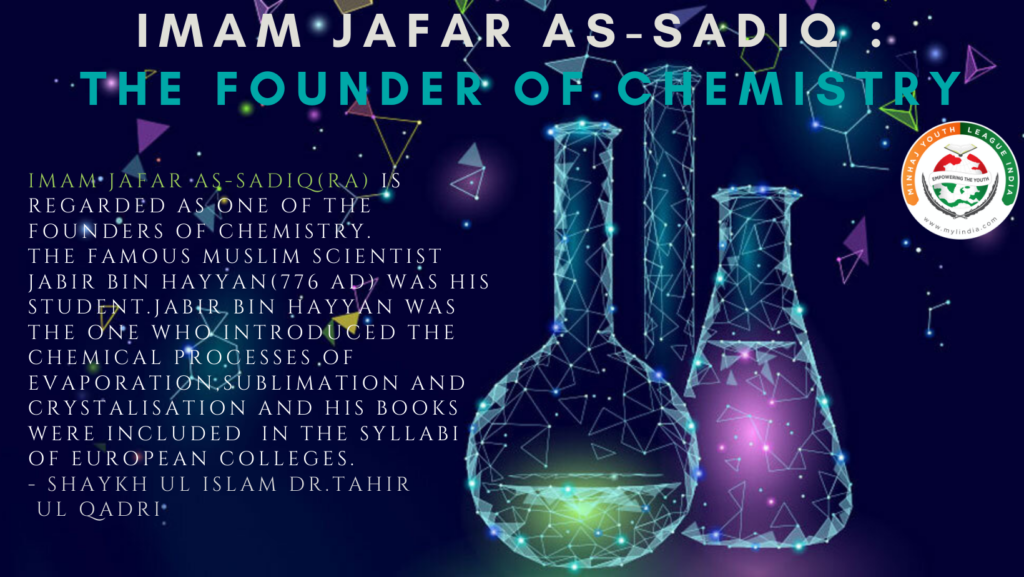The roots of modern chemistry, a branch of science which gave us new fuels, drugs and essential materials, can be traced back to the 8th and 14th Centuries, in other words, the Golden Age of Islam.
Imam Jafar as-Sadiq (RA) is regarded as one of the founders of chemistry. The famous muslim scientist Jabir Bin Hayyan (776 AD) was his student. He has left behind incredible prints in the world of Chemistry. He introduced objective experimentation in place of hypothesis and speculation. It is because of these Muslim pioneers that alchemy acquired the status of a science. Jabir Bin Hayyan was the one who introduced the chemical processes of evaporation, sublimation and crystalisation and his books were included in the syllabi of European colleges and universities for a long time. Since ancient alchemy mainly focused on the preparation of precious metals, Hayyan displayed his versatility and skill by dedicating his work to the development of basic chemical methods. He did this through experimentation and through the study of chemical reactions and their principles. As a result, he succeeded in transforming chemistry from the realm of myths and legends to a scientific discipline.

The scientific writings of Jabir ibn Hayyan are collectively known as “Jabirean corpus”. These include “Kitab ul-Mizan” (The book of Balance), “Kitab al-Kimiya” (The Book of the Composition of Alchemy). Seventy books amongst his corpus were about his experimental works in chemistry.
Hayyan’s treatises on alchemy were translated into Latin and several European languages. They became standard texts for European alchemists. Several technical terms introduced by him, such as alkali, found their way into various European languages and became part of scientific vocabulary.
The modern classification of elements as we know it today, of both metals and nonmetals, has its seeds in Hayyan’s chemical nomenclature. He suggested three categories for natural elements: spirits, which evaporate with heat; metals, such as gold, silver, lead, iron and copper; and stones which can be converted to powder. The method he used for classifying and grouping has been of great significance to modern chemistry.
Other innovations attributed to him range from the development of steel, the preparation of various metals, the varnishing of water-proof cloth, dyeing of cloth and tanning of leather. His use of manganese dioxide in glass-making, discovering how to prevent rusting, the development of aqua regia to dissolve gold, and identification of paints and greases, became the most popular techniques in the field of chemical engineering.
Please watch the video on this topic:https://www.facebook.com/mylintindia/videos/2774042219566998
Reference Book:- Sirat ur-Rasul (AS) by Shaykh ul Islam Dr. Tahir ul Qadri – Page 256
https://www.minhajbooks.com/english/book/247/Sirat-ur-Rasul-PBUH-vol-1/


